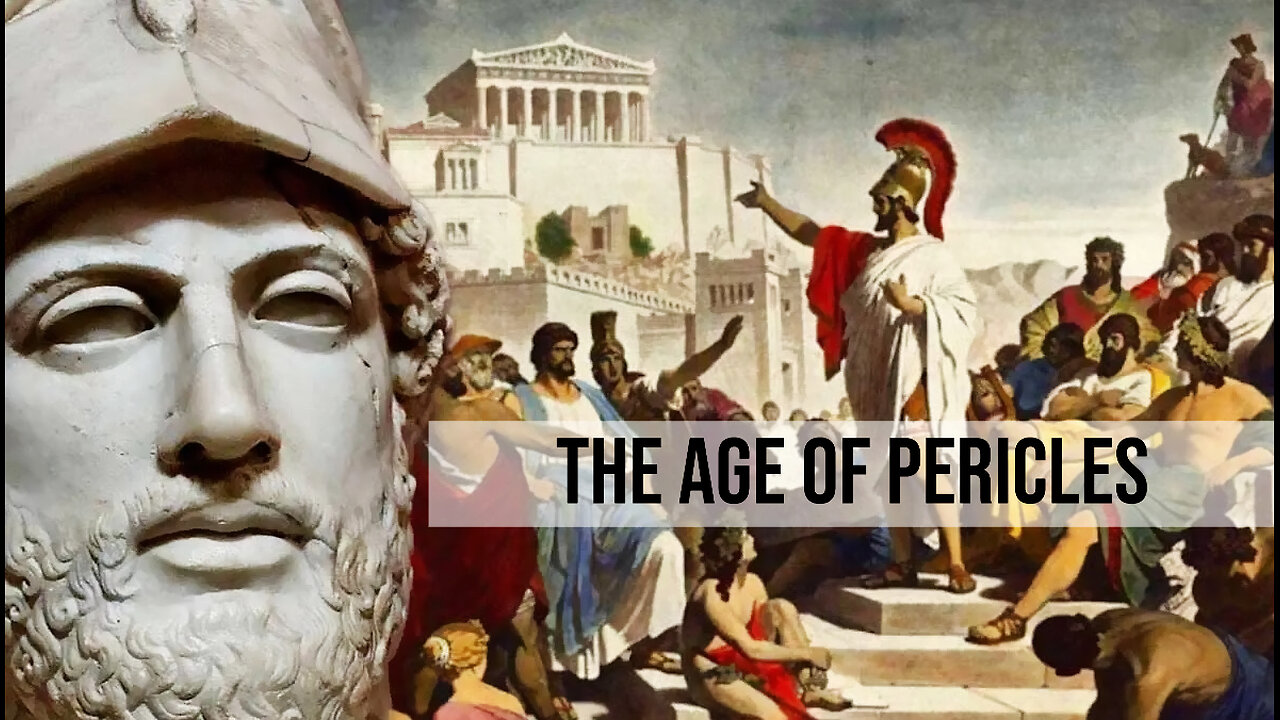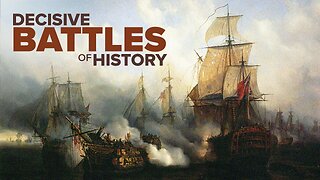Premium Only Content

The Age of Pericles | Coins, Trade, and Business (Lecture 11)
Lecture 11: Coinage first entered the Greek world in the 6th century, making possible rapid development in trade and commerce. Athens was especially wealthy in silver, mined at Laureion south of the city and minted as the famous “owls,” small silver coins with Athena’s symbol, the owl, on one side. This coinage was famous throughout the Aegean, although other states also took pride in minting coins with their states’ gods or distinctive symbols: the rose of Rhodes, the nymph Syracusa, the winged pegasoi of Corinth. The distribution of Greek coins confirms that the Greeks of the 5th century did not rely solely on a barter economy. Trade brought in grain from Ukraine, as well as luxury items from as far away as the Baltic, Africa, and the Near East. Pericles’s Athens was not only a religious and political capital city but also the greatest emporium of the Greek world. Goods flowed into the port of Athens at the Piraeus before transportation to the agora in the city. In this lecture, we’ll see some of the goods brought to Athens and look at how the Athenians responded to the increasing mercantile activity of the Periclean age: Banking, investment, and insurance were all developments new to the Greek world in the 5th century, as was the greater emphasis on regulating the market against fluctuations of supply (leading to fluctuations of prices). The increase in economic activity both reflected and reinforced the supremacy of Athens under Pericles.
Suggested Reading:
Davies, J. K. Wealth and the Power of Wealth in Classical Athens. New York: Ayer, 1981.
Jones, N. F. Ancient Greece: State and Society. New Jersey: Prentice Hall, 1997.
Lecture 12: https://rumble.com/v5ej3jt-the-age-of-pericles-death-and-burial-lecture-12.html
-
 30:17
30:17
The Great Courses
2 months agoDecisive Battles of World History | 1942 Midway - Four Minutes Change Everything (Lecture 34)
197 -
 LIVE
LIVE
Dr Disrespect
4 hours ago🔴LIVE - DR DISRESPECT VS. JEAN-CLAUDE VAN DAMME - HITMAN
1,861 watching -
 1:05:04
1:05:04
Mark Kaye
3 hours ago🔴 Trump Sends Dems Into RAGE Over Flag Burning Executive Order
4.12K4 -
 29:39
29:39
Afshin Rattansi's Going Underground
1 day agoEx-Israeli PM Ehud Olmert: INTOLERABLE Amount of Innocent Palestinians Have Been Killed in Gaza
1.73K23 -
 7:49
7:49
Dr. Nick Zyrowski
6 months agoVitamin D is Dangerous? Get The TRUTH!
3.08K11 -
 1:03:48
1:03:48
daniellesmithab
2 hours agoExploring Nuclear Energy in Alberta
7.57K2 -
 LIVE
LIVE
Reidboyy
1 hour agoNEW FREE FPS OUT ON CONSOLE NOW! (Delta Force = BF6 with Killstreaks)
81 watching -
 2:30:04
2:30:04
Nerdrotic
4 hours ago $1.18 earnedNerdrotic Nooner 509
18.7K1 -
 1:48:16
1:48:16
Tucker Carlson
2 hours agoCliffe Knechtle Answers Tough Questions About the Bible, Demons, Israel, Judas, Free Will, and Death
64.4K123 -
 LIVE
LIVE
Viss
3 hours ago🔴LIVE - How To Winner Winner Chicken Dinner! - PUBG
131 watching